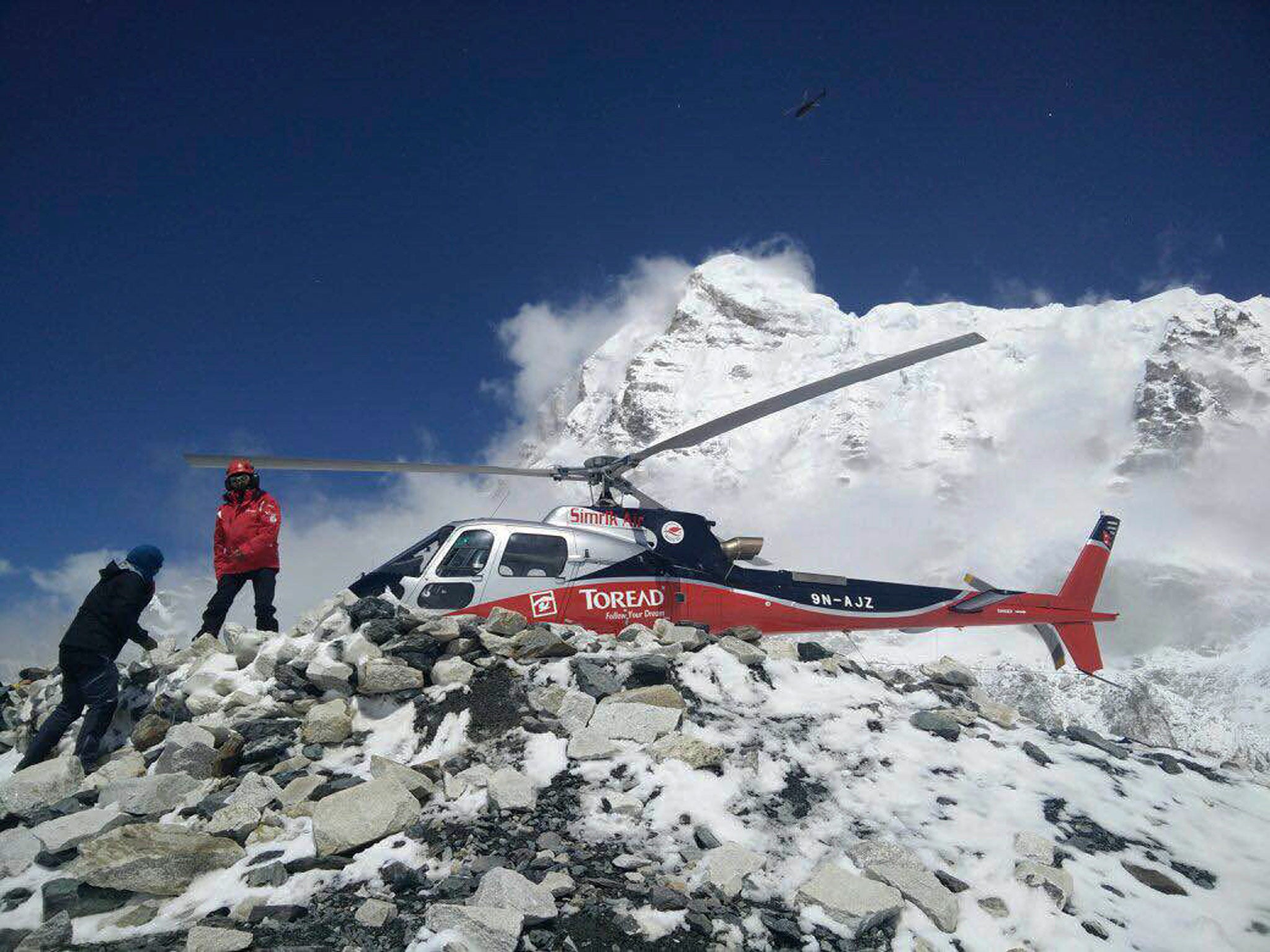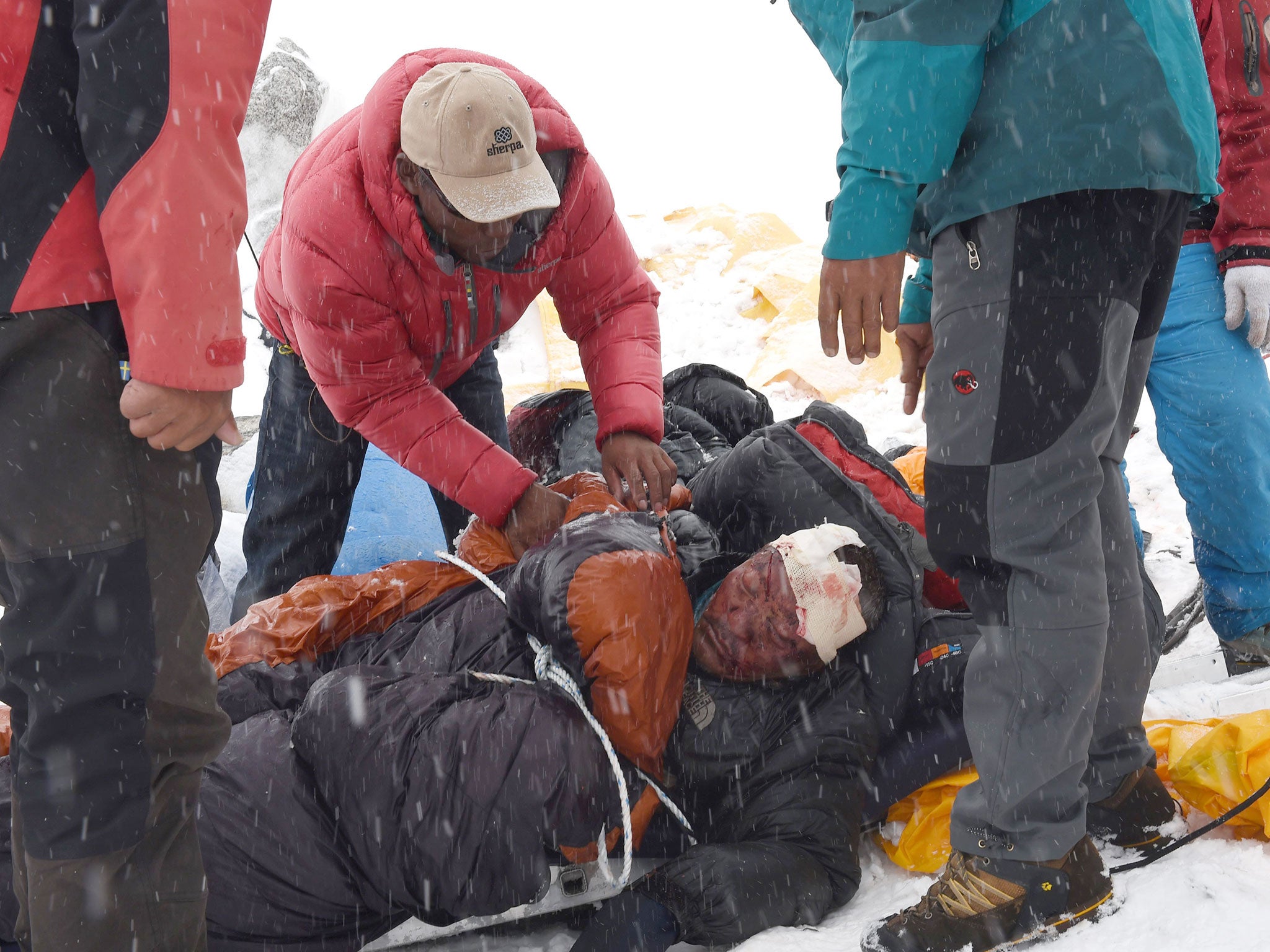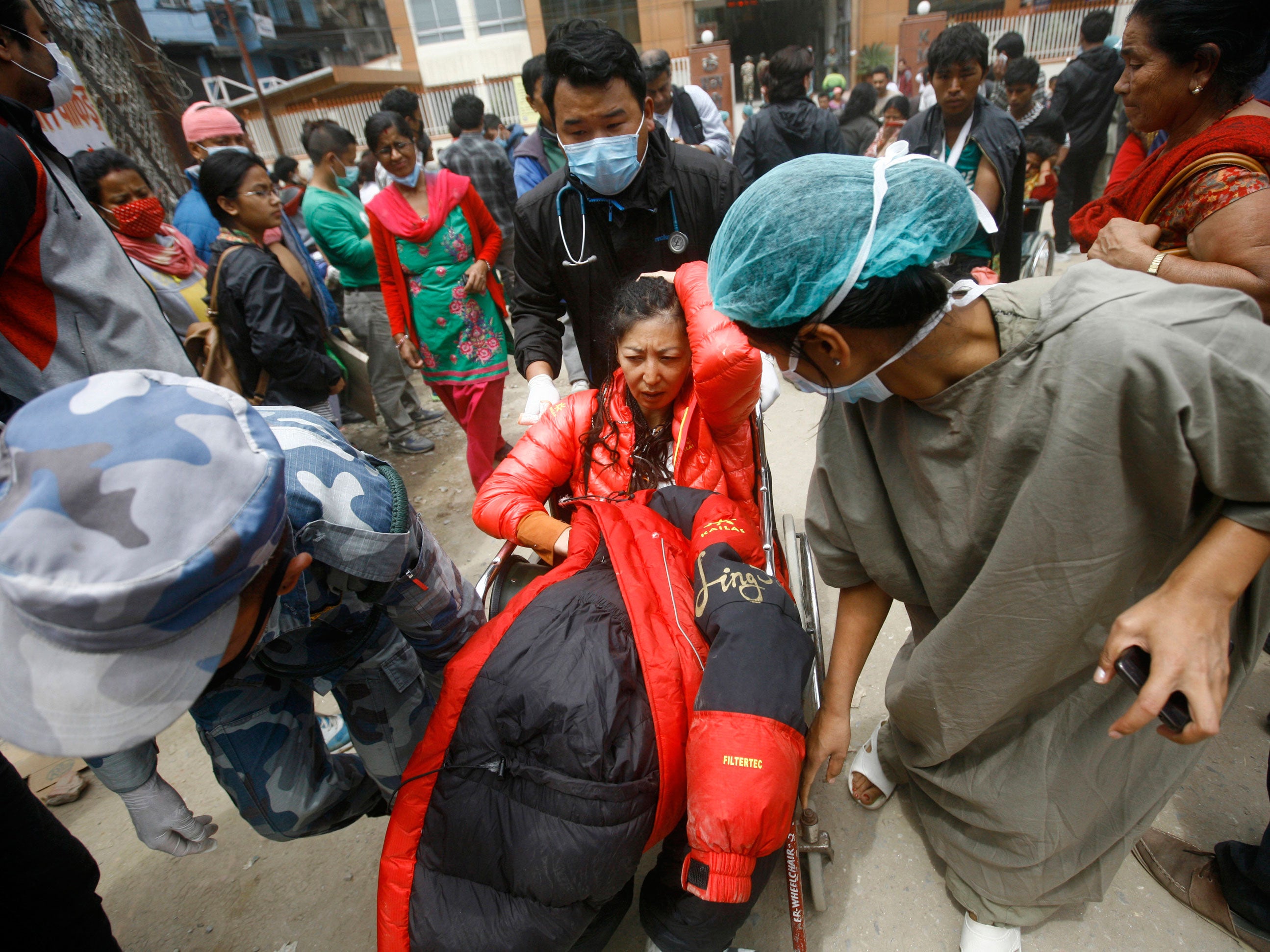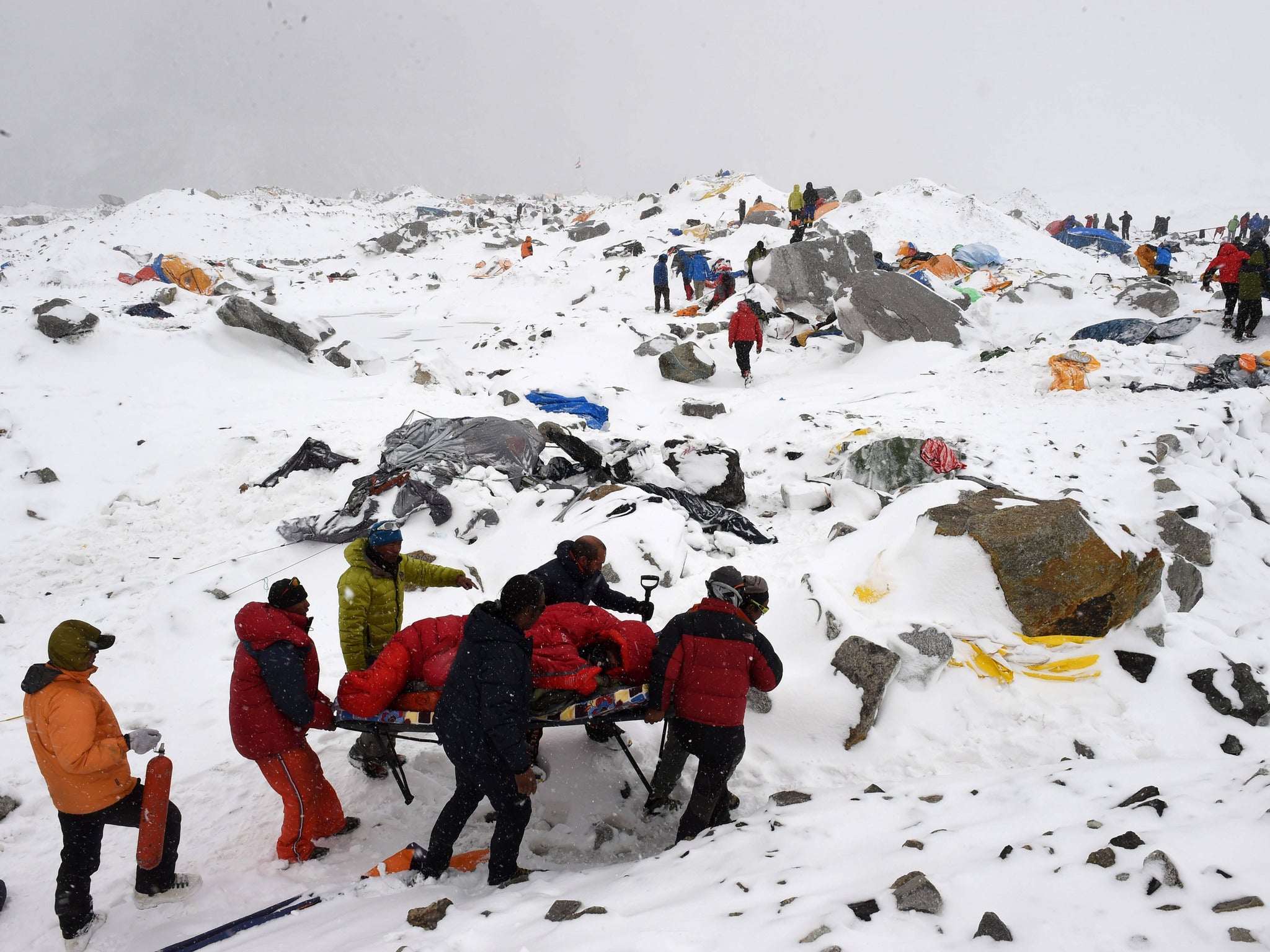Nepal earthquake: Hundreds of climbers trapped on Mount Everest in the worst disaster in the mountain's history
The only way the climbers can reach safety is via a constant convoy of helicopters

Your support helps us to tell the story
From reproductive rights to climate change to Big Tech, The Independent is on the ground when the story is developing. Whether it's investigating the financials of Elon Musk's pro-Trump PAC or producing our latest documentary, 'The A Word', which shines a light on the American women fighting for reproductive rights, we know how important it is to parse out the facts from the messaging.
At such a critical moment in US history, we need reporters on the ground. Your donation allows us to keep sending journalists to speak to both sides of the story.
The Independent is trusted by Americans across the entire political spectrum. And unlike many other quality news outlets, we choose not to lock Americans out of our reporting and analysis with paywalls. We believe quality journalism should be available to everyone, paid for by those who can afford it.
Your support makes all the difference.Hundreds of climbers remain trapped on Everest as rescue teams race to mount an evacuation before supplies run out following the worst disaster in the mountain’s history.
The Nepalese authorities said up to 200 mountaineers were caught in camps above the site of the avalanche triggered by the earthquake on 25 April which claimed at least 18 lives on the world’s highest peak.
The vast ice fall which swept through base camp has cut off the descent for climbers at the four camps above, meaning the only way they can reach safety is via a constant convoy of helicopters.
But the thinness of the air means the aircraft can only carry up to three passengers at a time and rescuers face a race against time to remove all those trapped before rations are depleted and the risk of altitude sickness at the highest camps sets in.
Jelle Veyt, a Belgian climber who fled the avalanche which struck just as he arrived at Camp One, told BBC News: “There’s not enough power in the helicopters sometimes to take a lot of people at once. So there’s constantly helicopters flying back and forth from camp one to base camp, taking two or three people.

“Once in a while they take jerry cans or gasoline. They refuel the helicopter and it goes back to camp one. This is constantly happening.”
Alex Schneider and Sam Chappatte, a British couple who were caught in the avalanche, tweeted: “There is a mass exodus from camps 1&2, never seen so many choppers.”
A team of 14 British Army Gurkhas attempting to become the first serving members of the famous Nepalese regiment to reach the summit of Everest were among those who were yesterday evacuated back to base camp, where they began work helping those who remain at the devastated site.

In the meantime footage emerged of the moment the avalanche struck, sending millions of tonnes of snow, ice and rock cascading down the mountain and engulfing the camp at 17,500ft where up to 42 separate teams were assembled to begin the first assaults on the summit of the 2015 climbing season.
The film shot by German mountaineer Jost Kobusch shows him remarking to a colleague “the ground is shaking” amid nervous laughter as the camera pans across base camp.
Moments later the vast rolling cloud of the avalanche hoves into view and Mr Kobusch dives for a nearby tent, telling his comrade “hold my jacket, hold my jacket” as they are engulfed. When the flow subsides, he emerges from his shelter looking for a more robust structure, saying: “Maybe in the kitchen tent... Oh no, there is no kitchen tent.”

At least 17 at base camp, including Nepalese sherpas, perished in the immediate impact with a further climber dying from his injuries. A further 60 were injured in the sprawling camp which will house up to 1,000 people during the climbing season.
The tragedy represents a double disaster for the climbing industry that depends on Everest by threatening to devastate Nepal’s tourism industry as much as its citizens.
The Everest climbing season was only just beginning after that of last year was unofficially cancelled following the deaths of 16 sherpas in another avalanche and a subsequent protest at what the guides said was the failure of the government to provide adequate insurance.
Hundreds of climbers pay an average of £30,000 each to make the pilgrimage to Everest every year, representing a significant chunk of the £1bn the Nepalese economy receives each year from tourism.
One tourism industry analyst said: “In the short term, Nepal is going to see its tourism fall to near zero levels.”
Join our commenting forum
Join thought-provoking conversations, follow other Independent readers and see their replies
Comments